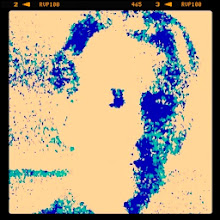“The time that we kill keeps us alive.”
Mamoru Oshii says that the most important part of a film is the visuals, after which comes storyline, with characters least important. He is not alone in this – such an approach can be seen in, oh, almost every CG-reliant film since the re-re-re-mastered Star Warses – but almost alone in outright stating it as a rule to work by. And The Sky Crawlers, latest in a long line of acclaimed animated creations, exemplifies this: it’s heart-stoppingly beautiful, meandering and thin on plot, and populated by a cast of emotionless two-dimensional* ciphers.
Jeremy Levett is here to explain why we should all be watching Mamoru Oshii's The Sky Crawlers (2008)
Mamoru Oshii says that the most important part of a film is the visuals, after which comes storyline, with characters least important. He is not alone in this – such an approach can be seen in, oh, almost every CG-reliant film since the re-re-re-mastered Star Warses – but almost alone in outright stating it as a rule to work by. And The Sky Crawlers, latest in a long line of acclaimed animated creations, exemplifies this: it’s heart-stoppingly beautiful, meandering and thin on plot, and populated by a cast of emotionless two-dimensional* ciphers.
Yuichi Kannami is a fighter pilot. He’s a child, although given that vague agelessness this style of animation gives characters this isn’t as obvious as it should have been. He arrives at an aerodrome which feels like a lazy summer holiday on a fighter base in July 1940. Along with normal-seeming adult groundcrew, it’s populated by a number of other underage pilots. They smoke, drink and visit brothels, all with complete detachment and lack of emotion. Occasionally, they get into their fighters and kill people. But mostly, they do nothing. That, more or less, is the film.
There is an invincible pilot called The Teacher on the other side, who nobody has ever defeated; there are back and forth bombing raids and scrambles, a massive operation which the squadron take part in, and most interestingly of all, the whole war seems to be publicly broadcast entertainment acted out by warring megacorps; but the cast don’t care about the outcome of the ops or the war, just as they don’t care that their comrades are dying around them, or care that their youth is due to them being biologically immortal, something the film mentions as casually and inconsequentially as I just did now.
The Sky Crawlers is about detachment. Saying the film has no plot is unfair; there is a plot, replete with drama, emotion and intriguing set pieces, but the characters themselves aren’t terribly interested in it. You can (and people have) draw analogies to the disaffected yoof o’today, for whom reality cannot live up to entertainment; escapism – in this case, very real combat - gives a level of stimulus, a thrill that the rest of life can’t match up to. Kannami and his comrades sit around and wait for the next murderous dogfight, fumbling half-heartedly through awkward conversations and meaningless sex. They say little to each other and mean even less. Twists, turns, deaths and shocking reveals – which you can find out for yourself – are all met with the same blank-faced acceptance.
This is a film which is only really rewarding if you’re willing to read your own meanings into it, because it gives you damn-all to go by on its own. Taking the old “show don’t tell” line to its logical extreme, the film tells you nothing. It’s definitely not for everyone; in creating a commentary on bleakness and ennui Oshii has given us a bit of escapism that is, at the surface, astoundingly boring.** Those looking for sharp dialogue or a fast-paced story should look elsewhere. But it is still an immensely satisfying film.
The visuals - apart from a truly awful and unreal-looking coastline at the end which almost ruins the closing scene – are, as you would expect – fantastic. There’s an obvious distinction between the flat, simply shaded characters and the gorgeous, photorealistic CG battle scenes,*** but while in most animation that would be a result of all the money going to the fight scenes, in this film be you get the feeling that it’s intentional; the budget was clearly there to make everything look perfect. The pilots speak their own Japanese on the ground, but switch to (accented) English when they go to war. The ground is a softly shaded, contemplative set of traditionally drawn backdrops, and only when they’re flying – only when they’re killing - is the world in three dimensions.
Watch it in the original Japanese, and don’t turn it off until after the credits.
* hurrrr
** There are perhaps ten minutes of combat in a two-hour movie. If that’s all you want, it’s on Youtube.
*** A moment about the machines, which deserve their own mention; the setting is one in which the jet engine was never invented, and the fighters and bombers look like WW2 piston designs taken to their ultimate extreme. Contra-rotating propellers abound. The protagonist and his fellows mostly fly a souped-up evolution of the J7W Shinden, a prototype put forward by Japanese designers about two minutes before they lost the war, while the Teacher (the evil bastard in the silver plane) flies something that has all the best aspects of the FW190, Sea Fury and Corsair in its lines, plus a turbocharger off a P-38 and a gigantic X-engine. There are also twin-engined fighters, night fighters and heavy bombers, all looking like things that didn’t quite make it into My Tank Is Fight. It’s glorious. War nerd out.











